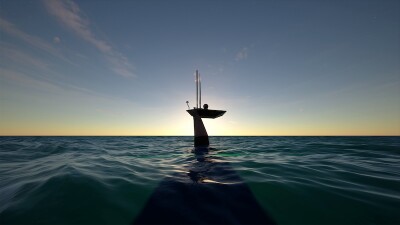2014 was a “banner year” for waterways on Capitol Hill, with an infusion of funds and positive legislative changes, but more needs to be done as demand continues to grow to transport agriculture, construction and petroleum products on the inland system, the head of a waterways advocacy group said Wednesday.
“We had a record appropriation (for waterways infrastructure improvements), the mid-year enactment of WRRDA ( the Water Resources Development and Reform Act), more appropriations in a continuing resolution, a nine-cents increase in the diesel fuel tax,”that will add money to the Inland Waterways Trust Fund, and an act by Congress that committed more federal funds to finish the costly and delayed Olmsted lock and dam project on the Ohio River, Mike Toohey, president and CEO of the Waterways Council told reporters.
The work is far from complete, however. as waterways advocates must now counter a 13 percent cut proposed by the Obama administration in the fiscal 2016 civil works budget for the the U.S. Army Corps of Engineers, which manages, operates and builds the inland waterways system.
The cut, Toohey said, “is nothing unexpected”in that all administrations - Republican and Democrat - play the same budgeting game of recommending low funding for the Corps, knowing the Congress will up the money.
“It’s been going on for 40 years, that’s the way the game is played,”Toohey said, adding that waterways advocates still need to make the case to Congress that the investments are worthwhile. This is especially necessary as there are many new members who joined Congress in January who are unfamiliar with benefits waterways offer the nation.
Also disappointing in the president’s budget was the absence of funding for several navigation projects already under construction (Kentucky Lock and Dam and the Chickamauga Lock and Dam, both on the Tennessee River), for the Upper Mississippi Ecosystem Program, and the push, yet again, for a lockage fee that has been soundly rejected by Congress in the past.
WCI joined a group of other waterways stakeholders in sending a letter today to the Senate Appropriations Committee, urging a healthy budget for the Corps of Engineers.
It suggests a $2.75 billion budget for fiscal year 2016, $407 million more than appropriated in fiscal 2015. The letter notes the link between strong inland infrastructure and economic prosperity, and cites the recent West Coast port strikes as “adverse economic impacts”that can occur when marine transportation is interrupted. “We must maintain our navigation channels and inland waterways for safe and efficient freight movement to avoid similar impacts,”the letter said.
Toohey added that U.S. exports are predicted to continue to grow, as demand remains strong for US. agriculture. The U.S. energy boom, the U.S. Department of Transportation says, is “putting an unprecedented demand on the U.S. transportation system,”and Toohey explained that these demands put increasing pressure on an already antiquated and in many regions crumbling waterways system.
Toohey outlined the following objectives for WCI in the coming year:
- Funding Olmsted at $180 million with cost-sharing of 85 percent from federal government and 15 percent from the Inland Waterways Trust Fund (IWTF), which is financed by a diesel tax paid by the barge industry.
- Funding at least $180 million for other priority inland improvements.
- Funding inland waterways operations and maintenance at $700 million
- Setting Energy and Water appropriations at the full amount targeted in WRRDA 2014 from the Harbor Maintenance Trust Fund.
- Funding $360 million for the IWTF
- Completing a nationwide operations and maintenance assessment of the inland system and ranking priority projects.
Toohey said future planning for the inland system is hampered by data from the Corps that is two years behind. He said the most recent data on cargo movements on the inland waterways reflects 2013 traffic. “I’d love to have perfect information and perfect forward-looking data, but the way we do it now is two years in the rearview mirror, and it’s a problem.”




